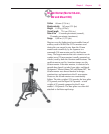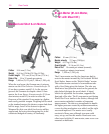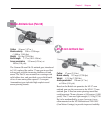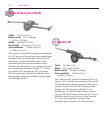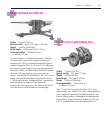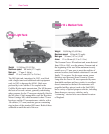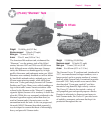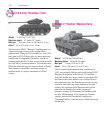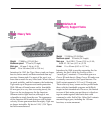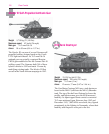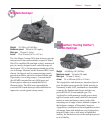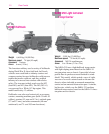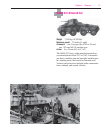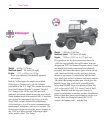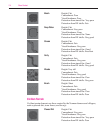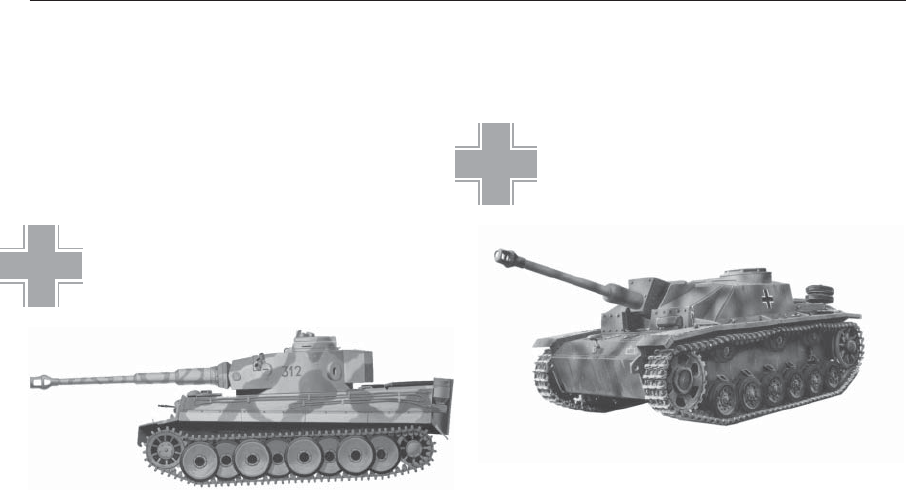
Chapter 5 Weapons
107
StuG IIIG/StuH 42
Infantry Support Tanks
Weight
23,900 kg (52,580 lbs)
Maximum speed
40 km/h (24.4 mph)
Main gun
StuG IIIG: 75 mm (2.95 in.) L/48;
StuH 42: 10.5 cm (4.13 in.) L/28
Armor
11 to 50 mm (0.43 to 1.97 in.)
Introduced in 1940 to provide supporting fire for
infantry, the StuG (short for Sturmgeschutz—
“assault gun”) mounted a 75-mm main gun on a
Panzer III tank chassis. Many Panzer III tanks were
eventually converted to StuG specifications. The
StuH variant mounted a 10.5-cm L/28 main gun.
Their relatively heavy armor and low profile made
these vehicles formidable weapons and difficult
targets in their intended role. However, the limited
traverse of their main guns put them at a disadvan-
tage in combat against other tanks that could
command a wider field of fire. Other StuG variants
mounted larger guns, including the 150-mm
howitzer, as main armament.
Tiger I Heavy Tank
Weight
57,000 kg (125,685 lbs)
Maximum speed
37 km/h (23 mph)
Main gun
88-mm (3.46-in.) L/56
Armor
25 to 100 mm (0.98 to 3.94 in.)
Introduced in 1942, the Tiger I heavy tank was larger,
heavier, better armed, and better armored than any
previous German tank. For most of the war it was
more than a match for any Allied tank. What it lacked
in speed, mobility, and fuel economy, the lumbering
Tiger made up in firepower and armor protection.
With 100 mm of frontal armor and its formidable
88-mm gun (in a very slow-traversing turret), the
Tiger was far too dangerous for the American
Sherman tank to fight head-on, although it was
vulnerable to attack from the rear. The appearance
of the American M36 tank destroyer with its high-
velocity 90-mm gun meant that the mighty Tiger was
no longer invincible. By late in 1944, 1,354 Tigers
had been manufactured.



